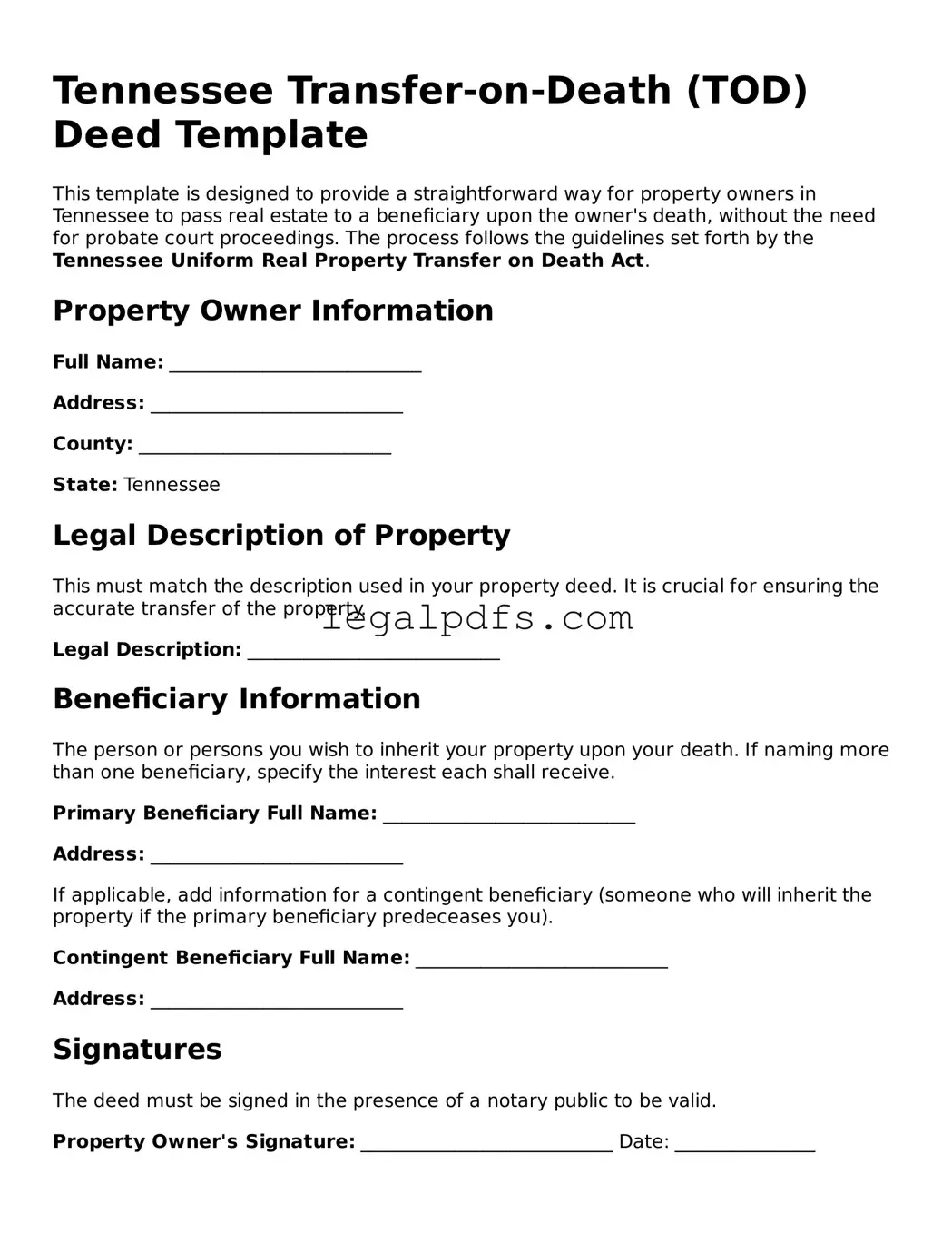Tennessee Transfer-on-Death (TOD) Deed Template
This template is designed to provide a straightforward way for property owners in Tennessee to pass real estate to a beneficiary upon the owner's death, without the need for probate court proceedings. The process follows the guidelines set forth by the Tennessee Uniform Real Property Transfer on Death Act.
Property Owner Information
Full Name: ___________________________
Address: ___________________________
County: ___________________________
State: Tennessee
Legal Description of Property
This must match the description used in your property deed. It is crucial for ensuring the accurate transfer of the property.
Legal Description: ___________________________
Beneficiary Information
The person or persons you wish to inherit your property upon your death. If naming more than one beneficiary, specify the interest each shall receive.
Primary Beneficiary Full Name: ___________________________
Address: ___________________________
If applicable, add information for a contingent beneficiary (someone who will inherit the property if the primary beneficiary predeceases you).
Contingent Beneficiary Full Name: ___________________________
Address: ___________________________
Signatures
The deed must be signed in the presence of a notary public to be valid.
Property Owner's Signature: ___________________________ Date: _______________
Notary Public's Signature: ___________________________ Date: _______________
Seal:
Recording
After the TOD deed is created and notarized, it must be recorded with the county recorder's office in the county where the property is located, in order to be effective.
Common Questions
What happens if the beneficiary predeceases the owner?
The owner should name a contingent beneficiary when creating the TOD deed. If the primary beneficiary predeceases the owner and no contingent beneficiary is named, the property will pass to the owner’s heirs at law under Tennessee's intestacy laws.
Can a TOD deed be revoked?
Yes, a TOD deed can be revoked by the owner at any time before the owner’s death by executing a new deed that expressly revokes the prior deed or conveys the property to someone else, and recording the new deed with the county recorder's office.
